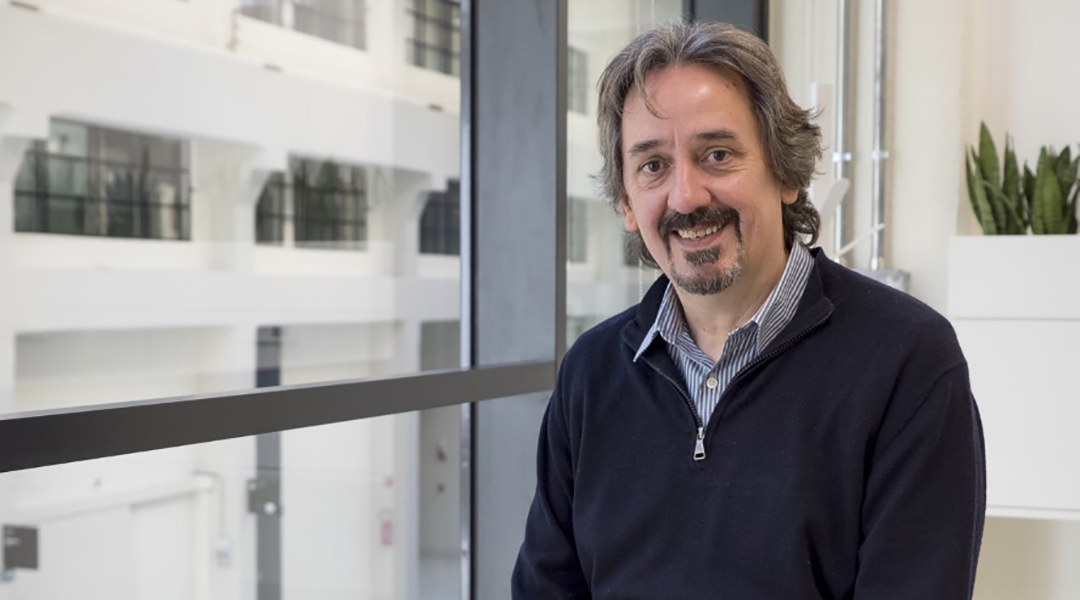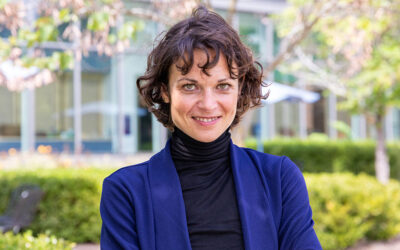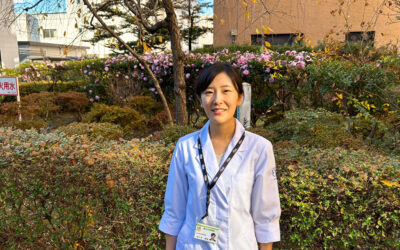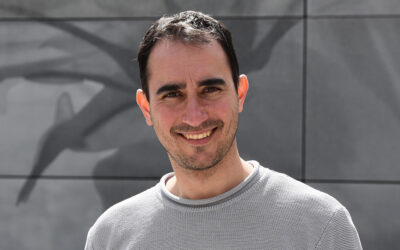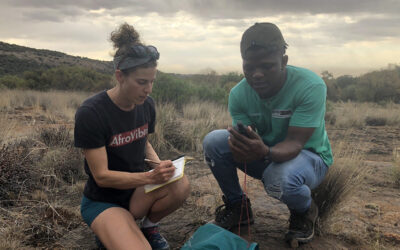Mummy researcher, Albert Zink, has dedicated his life to investigating the past. As scientific director at the Institute for Mummy Studies at Eurac Research in Bolzano, Italy, he has studied numerous and well-known mummies such as Tutankhamun, Ramses III, and the famous “Iceman”, Ötzi, who was discovered in the Italian Alps.
Mummies can act as human time capsules, providing rare and personal glimpses into the lives and deaths of people who lived many centuries, or even millennia, ago. But mummification does more than just preserve tissue — it also preserves the DNA of ancient pathogens. Zink is particularly interested in learning about different bacterial, viral, and parasitic diseases from the past to establish how they may have evolved alongside their human hosts.
Zink and his team are also heavily involved in determining the best environments and practices for the conservation of mummies and relics, providing advice to museums, even serving as an advisor on movie sets, for example, for the movie Iceman in 2017.
Among his many investigations and contributions to the field, Ötzi, the Iceman, holds a special place in his heart, and this year marks the 30th anniversary of his discovery. We caught up with Zink to learn more about this famous discovery, his career and research, and what it’s like to study these remains from the past and bring ancient stories to life.
Investigating mummies is a unique path for a researcher. Why did you choose this path?
From the beginning, I was very interested in mummies and fascinated by the fact that you can reconstruct the circumstances, health, and diseases of individuals that lived in the past to get a direct insight into their life. Our findings are something that cannot be changed. Buildings, inscriptions, or drawings in tombs reflect the imagination of the time. With mummies, you can really study the people and understand how they lived.
Are there many researchers that do what you do?
It is a small field, so our institute is one of only a few really dealing exclusively with mummy studies. Some of my colleagues and collaborators work in the medical field or come from other areas of expertise such as radiology, pathology, or paleopathology, but who, from time to time, study mummies — because everyone is interested in mummies!
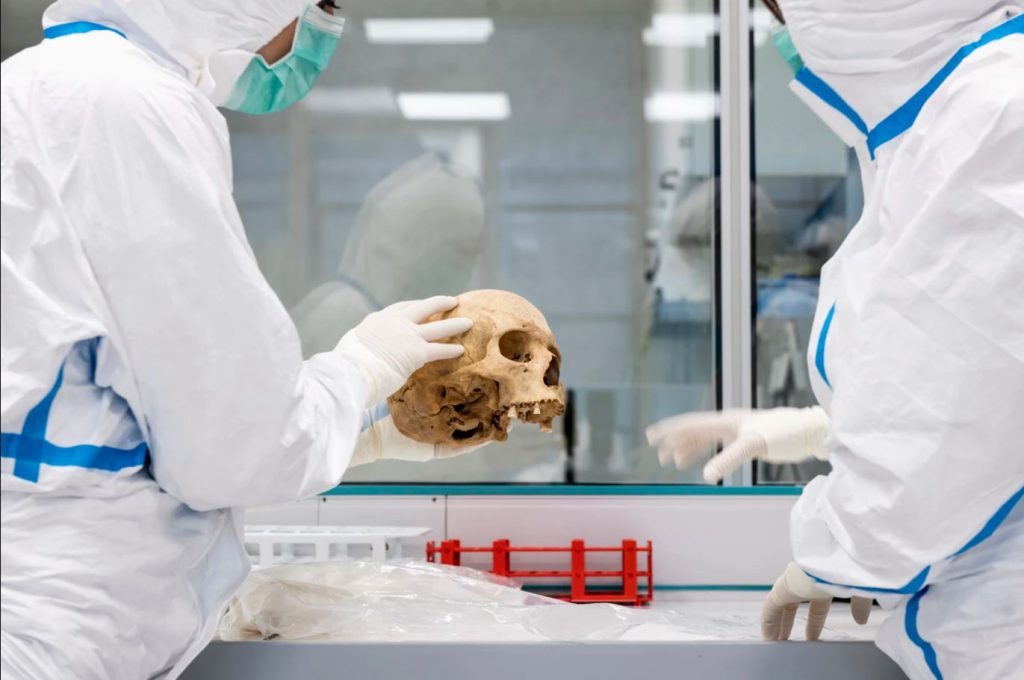
Did you have any important mentors or people in your life who inspired this unique path of yours?
One person I have to mention is Arthur Aufderheide. He’s a colleague who unfortunately passed away in 2013. He was a pathologist in the beginning and at the age of about 50 decided to get more into mummy research. He was one of the leading persons to establish mummy research as a scientific discipline. He wrote the most important textbook on the scientific studies of mummies, was open minded and a very good colleague. He became a good friend in the later years of his life; I learned a lot from him and appreciate that I knew him personally and could exchange ideas.
Another person is Donald Ortner. He has also passed away but he was one of the leading paleopathologists in the world. He was at the Smithsonian Institution in Washington — he also wrote the major textbook on paleopathology — and inspired me to investigate diseases of ancient human remains. He was more specialized in skeletal changes, but he also was a big inspiration for my work.
Could you describe the different types of mummies?
Basically, we have natural mummies and artificial mummies. Natural mummies are those that are modified due to the environment or specific environmental factors, such as humidity, high temperature, or even cold temperature. The Iceman is maybe the best example of a natural mummy. But we also have these special natural mummies — the bog bodies — that were mummified due to the acid environment of the bog and preserved due to the absence of oxygen, which enhanced mummification.
More recent natural mummies include church mummies found in churches across Europe, with some big collections in Italy. In Sicily, we worked in the Capuchin Catacombs of Palermo. There are about 2000 mummies just in this collection, and most of them were naturally modified due to the conditions in the catacombs.
Artificial mummies, such as those found in Egypt, for example, occur when something is done to enhance mummification. In Egypt, they removed the organs and desiccated the body by putting them into salt and then wrapping them. There are a variety of methods to do this. In some cultures, they removed organs or sometimes they just wrapped the bodies and put them in specific areas where they knew they would be preserved.
More modern approaches, such as what was done to a few of the church mummies in Sicily, involved modern embalming. There, you exchange body fluids with chemical substances that lead to preservation of the tissue. In the beginning, they used heavy metals such as mercury and lead, which were a bit poisonous, so it was dangerous work. In later times, they developed the use of formalin, that is still used today.
How do you study them?
For the examinations, the limitation depends on the individual case. Maybe they wrapped the mummies, like the Egyptians, and you cannot inspect them much from the outside because you’re not allowed to unwrap them or to perform any kind of autopsy. Instead, we must use computer tomography and CT scans to look inside. Sometimes we are lucky and find an entrance point to go inside and take some samples. You sometimes lose information if the organs were removed, which was a common mummification practice in Egypt. Even if the organs are put into vessels, called canopic jars, they’re not as well preserved and you can’t get much information out of them.
Natural mummies have the advantage that you can inspect them from the outside — when they are not dressed. For the Iceman, they found tattoos and saw he had some damage to his face. Then you can also use CT scans and molecular analysis to find out more.
How well the mummies are preserved determines whether you can get any DNA out of them. We know that cold and dry environments are better for the preservation of biomolecules then hot and dry climates. For example, it was long believed that Egyptian mummies no longer contain DNA, but now we know that there is still DNA preserved [within their bones and teeth]. Maybe not as good as what we have observed in the Iceman, but there is still the possibility to extract genomic DNA.
The best area to extract DNA from the bones of a mummy is the pars petrosa [a part of the temporal bone], an area of the inner ear. There, you get the best preservation of human DNA. In order to obtain genomic DNA from a mummy we always try to drill a little hole there and take some powder out of the inner ear area, when possible. However, this is not always allowed.
What mummy type is the most complicated to investigate?
It’s difficult to say because every mummy is a bit different. Bog bodies are usually very difficult to study. I was involved in the study of a few and they are very special. Due to the acidic environment, their bones can be completely degraded. Sometimes you can just see their skin and maybe some remnants of organs. It’s very hard to understand what clues could be preservation-dependent and what could be evidence of a disease.
What techniques do you use to carry out your investigations? Have any been developed recently that allowed you to dive deeper into a mummy’s history?
First, you try to do an external inspection just to understand how the mummy is preserved, whether it’s natural or artificial. Then, if possible, you use CT scanning, which has become one of the major methods because this is a non-invasive technology and it allows you to get a lot of information from the mummy. Usually, it allows you to tell the age and sex, how well it was preserved, if the organs were removed or not, and how the mummy was treated and embalmed.
The next thing is taking samples for molecular analysis — though we had experiences with collections on the Egyptian mummies where, if the mummies were perfectly preserved, their curators did not allow us to take samples because they didn’t want us to destroy anything. If there was no opening or any [natural] damage, it was very difficult to get inside and take samples.
But, if possible, we always try to do molecular analysis and DNA analysis. On the one hand, we get information about the individual and on the other hand, we look for pathogens.
More recently, we began looking into the diet of different mummies to see if there are, for example, some intestinal contents still present or any bacteria. As such, we are working on reconstructing microbiomes in mummies, which became possible only in last few years because the sequencing technologies have improved so much.
We can separate the human DNA from the bacterial DNA, then try to separate the environmental DNA from the original bacterial community. We can also separate the bacteria that were involved in beginning the decay of a mummy and those that maybe lived during life inside the stomach. I think this is the most challenging part and the most promising aspect of future mummy research.
In parallel, we try to analyze the lipids and proteins, especially when we look for the food components. I think there is a possible future for looking into detail into the proteins and enzymes of these mummies. This is a field that it’s not really developed now, but I think this could be possible in the future.
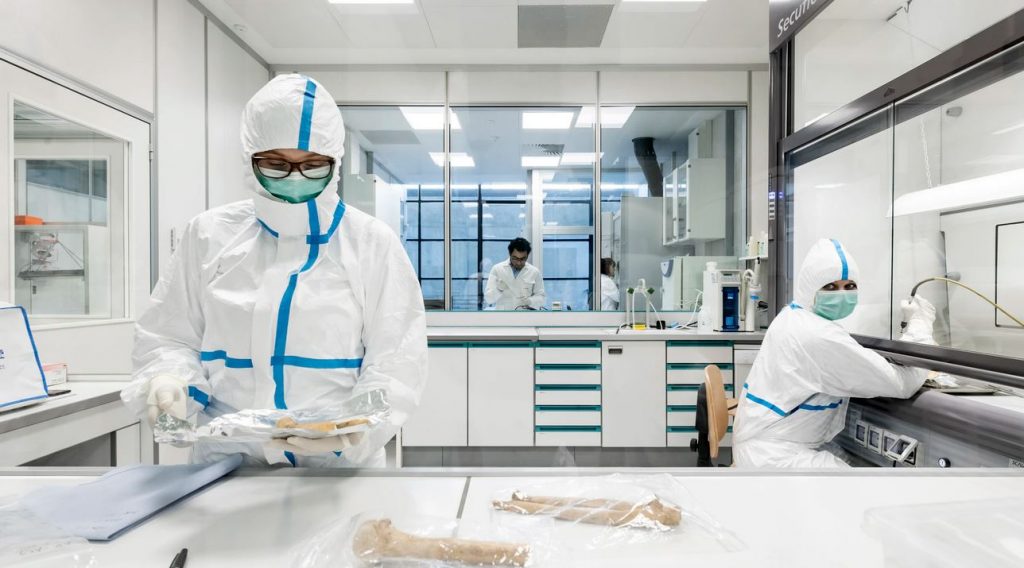
Which techniques are up and coming in the field? What future technique developments would you like to see?
We are always working with DNA, but there could be the possibility to work with RNA, which is usually not so well preserved. However, I believe that in very well-preserved mummies there’s a good chance that we can still find RNA and then we could think about doing transcriptomics [where RNA is transcribed into protein] and then move on to different “omics” like lipidomics [lipid composition of cell compartments, for example], and so forth.
We applied these methods a little bit on the Iceman, but I think we’ve just scratched the tip of the iceberg. There’s still a lot to develop in terms of methodology because there was a clear focus on paleogenetics [DNA technology to sequence and investigate genes and proteins from ancient organisms] over the last few years with skeletons, and so much done on human evolution. But there was not so much focus on the protein level or lipid level and metabolites. I hope that colleagues coming from these other fields, particularly young, up-and-coming scientists, are interested in diving into this area of mummy studies.
Is there ever the fear that a mistake or accident would result in a priceless piece of history being lost?
Actually, we take care that this does not happen. I think in past years, there was a lot of damage done to mummies because it was normal to conduct autopsies and remove everything that’s inside — even in skeletonized mummies — leaving everything completely destroyed. This is now normally not the case, but there are still a few exceptions with really severe cutting and organ removal for histological analyses.
We now think very precisely about what we need to find out and then decide what samples we need and how can we get them. With the Iceman, when we took samples from the stomach we planned and discussed this for almost a year before we decided to take them. We could, luckily, use an old opening to get access.
Curators might also not want you to take fully preserved mummies and experiment on them, and we accept that and respect these decisions. On the other hand, we also work on the development of methods that allow us to take the most minimally invasive samples with endoscopes, using tiny needles to go inside and take small samples for genetic or molecular analysis.
The Iceman was discovered 30 years ago this year. What was so significant about his discovery?
The discovery itself was in 1991 by two German hikers, Helmut and Erika Simon, in the Ötztal Alps — hence the name Ötzi — who by chance found his mummified corpse. They called the police because they thought it was somebody who had died recently.
The authorities started excavating and recovered him, but the problem was they didn’t know this was a very old mummy. There was a forensic doctor there who thought this was somebody who died some time ago, but he was not aware that the Iceman was so old. As a result, there was a lot of damage done during the recovery. They broke his arm to get him into a coffin and used many instruments to get him out of the ice. In the end, they brought him to the Institute of Forensic Medicine in Innsbruck and only realized it was an ancient mummy by asking an archaeologist for his opinion after about two weeks or so.
In the beginning, the Iceman was not stored properly. Corpses [in the morgue] are usually kept in a cold environment but not really frozen. The Iceman started decaying during that time and some mold started growing on him. Sometime later, they applied a harsh treatment to remove the growing mold and this did some damage though it’s difficult to say how much and it’s still quite surprising how well preserved he was in the end.
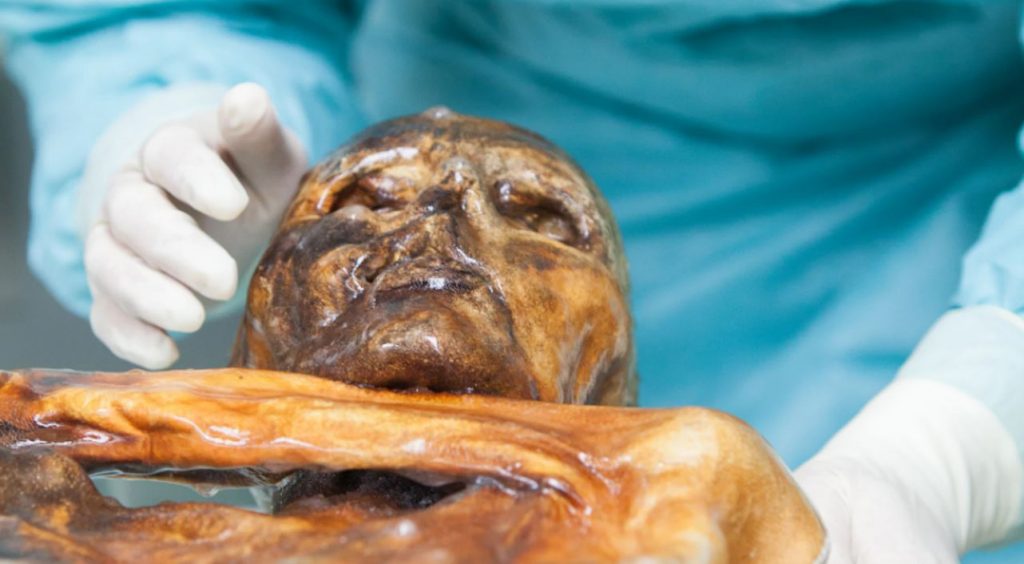
We were quite lucky that they realized what they had discovered and started to treat the mummy properly and to wrap it in ice. It seems that the preservation of the DNA was exceptional for such an old specimen, so in the end we were quite happy with it.
In 1998, the Iceman was transferred to Bolzano because they confirmed that he was found on the Italian side of the Alps and therefore belonged to Italy. Since then, he has been kept in a museum, conserved in a special chamber where the original cold and humid environment of his preservation is recreated.
We have learned a lot from this mummy because we also found all his equipment and clothing — this was the first time we got this type of clothing from that time period [between 3100 and 3370 BC]. There were also some blend residues found on his equipment that they used to make fire and some indication for medicine he carried with him, like Birch polypore — a fungus that we know has some anti-inflammatory properties.
We also found, during our study, that he ingested fern, a poisonous plant you wouldn’t normally eat except in Asia where they take parts of the young plant and put them in an acid solution, so it loses its toxicity. He could have used the fern as a medicine against his intestinal parasites, which we identified in his intestines by finding the parasite’s eggs. We learned a lot about his life, how he lived from what he carried with him and what his clothing was composed of.
How long does it take to investigate a mummy? Is it comparable to a “standard” research project, for example, that technically never ends, or is there a point where nothing new can be learned?
The Iceman is a very nice example because it’s maybe the best studied mummy, or rather person, in the world. I’m often asked if the point has been reached where we now know everything about the Iceman.
With improvements and the development of new technologies, you will always have new research possibilities. For example, we started the first genomic analysis of the Iceman, but when new sequencing technologies like the NGS [next-generation sequencing] came up, it was possible to create a genome reconstruction. The Iceman was actually the first mummy where this was done at all, and then a few years later, we did the stomach analysis where we found Helicobacter pylori [a bacterium that can inhabit the human stomach and is associated with stomach cancer]. This was only possible because we had this sequencing technology and a way to extract DNA out of these samples. Then we could study the composition of his diet through his stomach contents.
More recently, we switched to microbiome research in the Iceman. We have already studied a few members of the bacterial community found inside his body, like Prevotella copri [commensal bacteria in the human gut], which gave us some indication that he still had an ancient, original microbiome found in indigenous people and not in westernized populations.
I’m sure that new methods are coming out that will allow us to go into even more detail and study mummies in ways we don’t know we could. That’s why we can never really say “this is now the end”.
We also tried to expand what we learned from the Iceman to other mummies because we can then compare and apply the same methods. For example, what we had done with the stomach and Helicobacter pylori. We then collected other samples from the intestinal contents of other mummies, like Mexican mummies or mummies from Egypt and from Asia, where we were also looking for Helicobacter pylori. We investigated the microbiome and then put all this research on a database and did the same for cardiovascular disease. We know the Iceman had some genetic predisposition for this disease and there was some calcification in his body indicating arteriosclerosis. We are trying to use the same techniques with other mummies, where we also see many instances of calcification.
There are always some circumstances where we may never have a definite answer for the cause of death. For the Iceman, we know he died due to an arrow shot and we know he collapsed there on the mountain and was mummified, but we would also like to know why it happened and how it exactly happened. Was he shot by a single individual or were there many people involved? There will forever be pen questions, but we can collect more and more details over time, and maybe one day come to up with very plausible scenarios for what happened.
The Iceman also had some tattoos. What can you tell us about that?
I think it was not so common, but we don’t have any comparison because this is the only mummy we have from this time period. He was maybe a special person with a higher social status because he also had a copper ax, which was very precious [material] in this time. Maybe these tattoos were a kind of treatment because they were very simple stripes and two crosses.
The Iceman was apparently murdered because an arrowhead was found lodged in his shoulder. How often are you able to “solve” a mummy’s death? Why is the determination of death an important thing, what can be learned from it?
In most of the cases we study, we cannot determine the cause of death because you need some kind of proof. In the case of the Iceman, it’s quite clear because we can tell that he was killed with an arrowhead. Often, though, it’s difficult to tell when you find an injury whether this was a deadly injury or just was something he maybe suffered from in his daily life.
If the mummy has evidence of trauma, it of course helps to determine the cause of death. We had another example in Ramesses III where we could determine that he was killed by slitting his throat.
We also look on the molecular level to find any pathogens that could potentially be the cause. We did a study on Tutankhamun [popularly known as King Tut] where we know that he suffered from malaria because we found some genetic traces of the pathogen — though we know that he had some other health problems, so it’s difficult to tell in the end why he died at the very young age of 18 maybe 20 years. He could have died of malaria but he could have also died of a fractured knee that was not healed.
Maybe it’s not so important. In most of the Egyptian mummies, we do not really know why they died and so focus more on getting information about what age they died and the age of death distribution among the whole population in ancient times. What do diseases tell us about the general health of the population and about how they were affected by different diseases? In some cases, we are more interested in learning more about the disease, about the pathogen, and how the strain looked then compared to modern strains, to learn about their evolution.
What other impressive mummies have you investigated besides the Iceman?
The most exciting mummies were Tutankhamun [King Tut] and Ramesses III, the royal mummies. I started my career working on Egyptian mummies and it was always my dream to work in Egypt. This happened in my postdoc studies, where I worked there doing excavations. I also always had this dream of studying Tutankhamen, and this came true several years ago when we had this very fascinating study where we found out who his parents were and that he had malaria.
Another very impressive mummy for me was Rosalia Lombardo, when I worked in the Capuchin Catacombs in Palermo. She’s a little girl that died at the age of two and was then embalmed by a famous Italian embalmer, Alfredo Salafia, who developed this new method based on a formalin solution. It’s really impressive how well preserved she is. She is also called the Sleeping Beauty or La Bella Addormentata.
We had the chance to study her with radiographs and CT scans because she’s in a closed coffin. We also helped with her conservation and developed a special showcase [for her] inside the catacombs. The environment inside the catacombs has changed over time, and it’s now much too humid; we saw some growth of bacteria and mold. Maybe in the future we could do something for the whole site because it’s a pity that it’s starting to degrade.
Which mummy’s back story has touched you the most?
Generally, if you have child mummies, it touches you more deeply because you always think about this poor child that died so early. In the case of Rosalia Lombardo, we know that her parents were really devastated and they tried everything [to get her] embalmed so they could come and see her. At that time, it was forbidden to bury people in the catacombs, but they managed to convince the friars to make an exception. These stories touch your heart.
If they were still alive, which mummy would you love to have a conversation with?
The Iceman would be interesting to talk to, especially to understand who he was as a person. We can tell a lot about his health and maybe his daily life, but we don’t know what kind of person he was.
I would also like to ask him about his health issues. Did he really have pain from the stomach pathogen or from the gallbladder stones? We always think about what impact this has on their daily life and maybe it was quite different from what we experience today. Maybe we suffer much more from certain disease than they suffered in the past or vice versa, and such things would be interesting to discuss.
Is there any mummy you would love to examine but have not had the chance yet?
I would like to study more of the royal mummies in Egypt because when we did the work on Tutankhamen and Ramesses III, we were in the process of developing more studies but then the Arab Spring happened.
I am also interested in studying more South American mummies, like Juanita, who was also an ice mummy found in the mountains, and who was mummified in a similar environment to the Iceman. It would be interesting to make some comparisons between them.
I’m not really “hunting” for new mummies, but if there is a chance in the future, I would be happy to continue.

